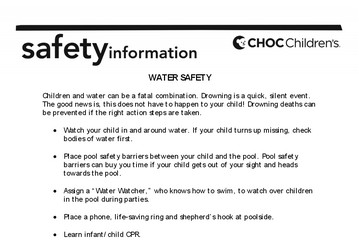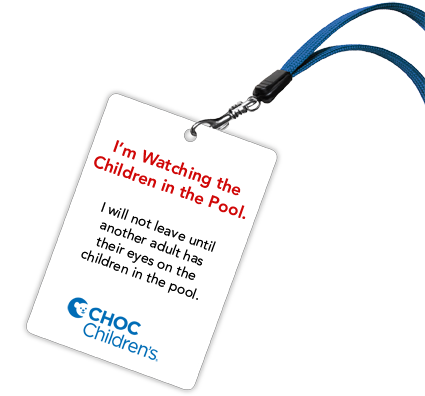RISK FACTORS AND PREVENTION
Drowning is the leading cause of unintentional injury-related deaths among children ages 1– 4 in Orange County and nationwide. Dr. Goodman, a CHOC critical care specialist, says locally backyard pools are often to blame during the summer. The best prevention, he says, is to have at least three separate barriers in place that prevent a child’s access to the pool. Barriers can include a fence around the pool, a pool cover and a pool alarm or a motion detector. “The barriers may not prevent them from getting to the pool but this creates an obstacle course to the pool and that will buy you precious minutes to prevent a drowning,” Dr. Goodman says. Swimming lessons also help but are not a guarantee.
“WATER WATCHERS”
To promote safety, Dr. Goodman suggests that an adult be designated as a “water watcher,” watching the kids in the water at all times, whether it’s a backyard pool or the bathtub. “Assigning someone to be responsible is a great plan and this keeps eyes on the kids in the water at all times,” says Dr. Goodman. “Drowning occurs quickly and quietly, so the water watcher shouldn’t be doing anything else, not even talking on the phone. My concern is to get the message out there to families of young children that drowning can happen to anyone, any time.”
RESUSCITATING VICTIMS
When it comes to drowning, every second counts. Cardiopulmonary resuscitation (CPR) performed by a bystander has been shown to save lives and improve outcomes in near-drowning victims. The more quickly CPR is started, the better the chance that the victim will have a reduced injury and a better outcome. “We can’t say enough about CPR. Everyone should know CPR and it’s easy to learn. If a child has drowned, CPR is the only thing that will save his or her life. You don’t want to wait until the paramedics have arrived because that’s too late,” says Dr. Goodman.




















